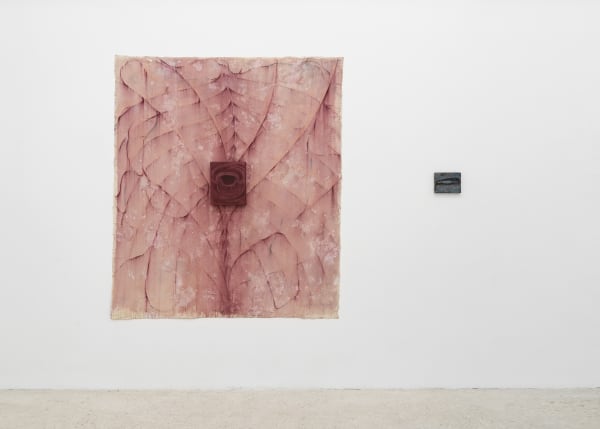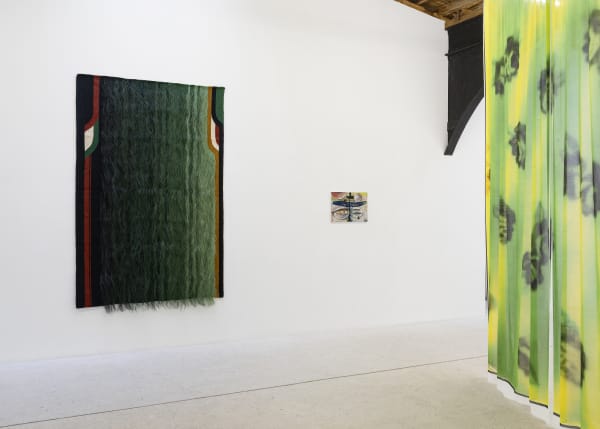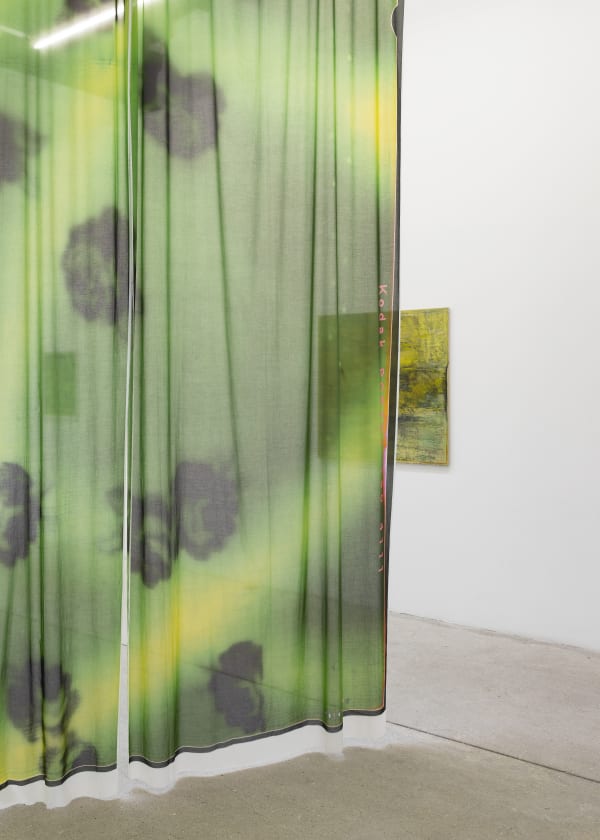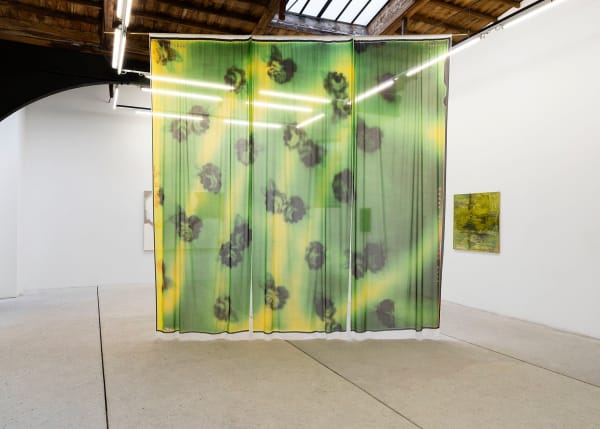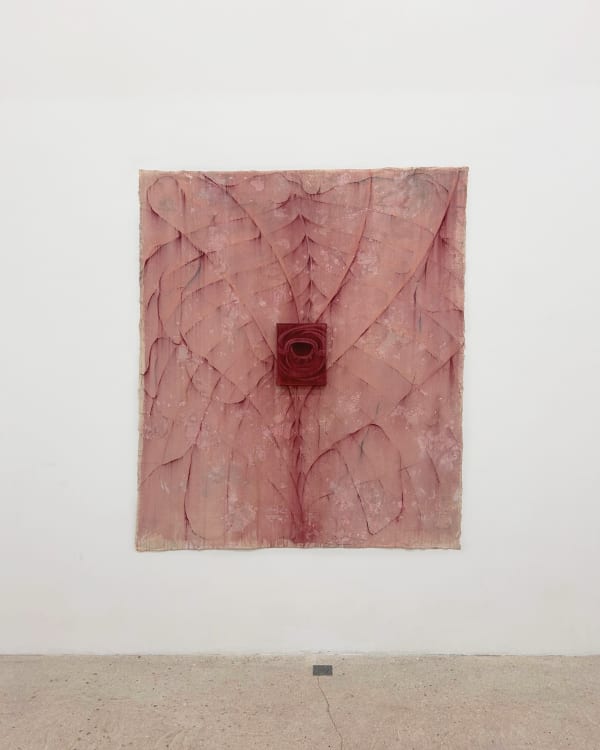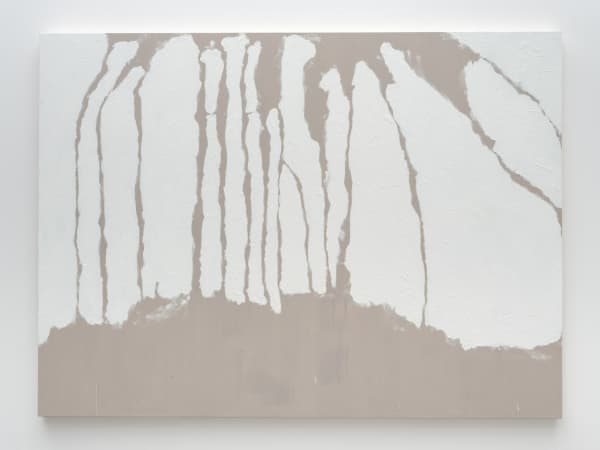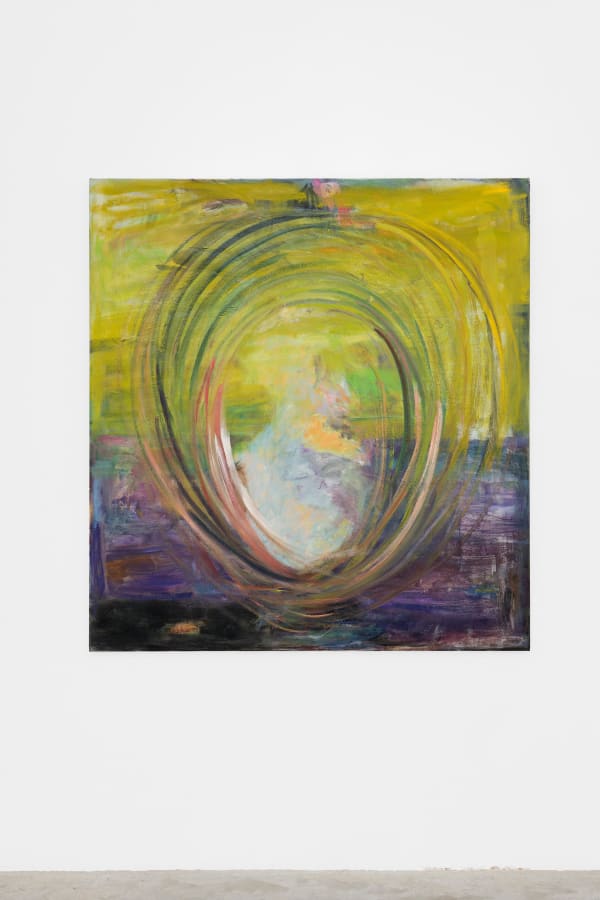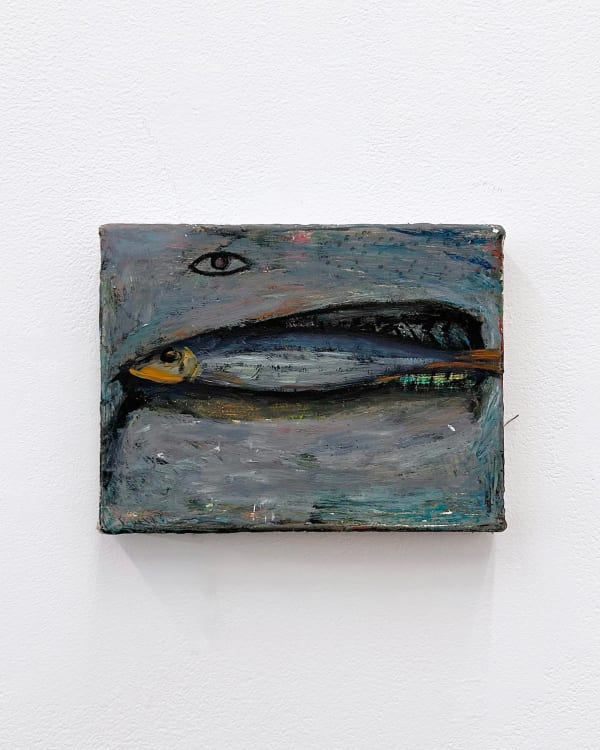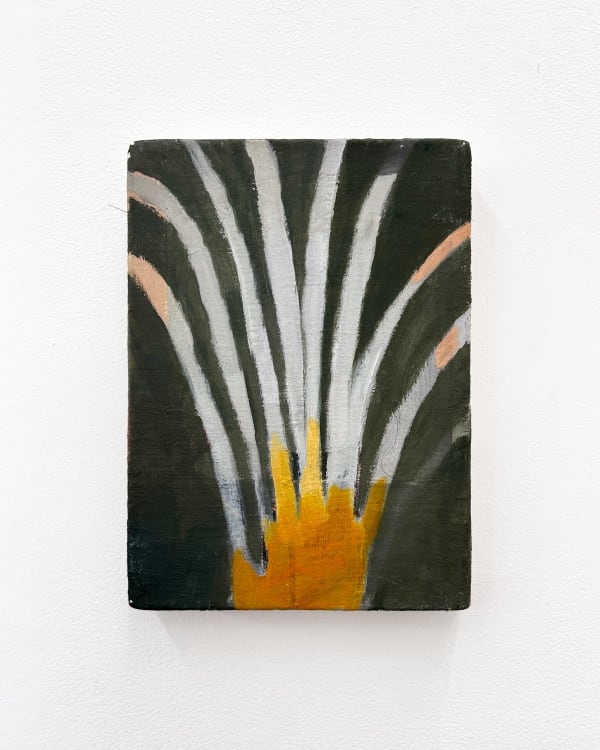Michel Serres, Parasite
Tony Just’s abstract paintings are made through the transfer of chance compositions onto the canvas. Just comes to these compositions in various ways, at times by spilling ink, or wine, onto books, and at other times by tracing shadows made by his arms and hands. His work looks at the multiplication of meaning, and interpretation, that happens in one’s encounter with abstraction, which he locates in both the quotidian and the sacred. Similarly, Sopho Kobidze’s works on view explore the construction of space in abstract painting. Dense and repetitive scratch-like marks lay an irregular and erratic grid over loose color fields. The works’ minimal palette highlights Kobidze’s organization of space through her fervent mark-making.
Taken as a whole, the collected works in Host resonate with Michel Serres’ infamous work The Parasite, in which Serres uses the parasite as a figure from which to theorize the fundamental basis of human social structures. In Serres’ estimation, the parasite—with its minor status—is an agent of change, having an immense capacity to initiate transformation. In one section titled, “The Gods, the Perpetual Host,” Serres writes: “The host’s pouring is infinite. His debt is never-ending… If he is hospitable, he pays forever. He pours, continuously.” Where there is a guest, there is a host, giving and giving.
- Marina Caron
-
 Ketuta Alexi-Meskhishvili, I am Kurious Green, 2023
Ketuta Alexi-Meskhishvili, I am Kurious Green, 2023 -
 Andria Dolidze & Keta Gavasheli, Other, 2023
Andria Dolidze & Keta Gavasheli, Other, 2023 -
 Tony Just, 1, 2, 3, 4, 5, Ich, 1, 2, umarme dich, 2023
Tony Just, 1, 2, 3, 4, 5, Ich, 1, 2, umarme dich, 2023 -
 Tony Just, 1,2,1,2,3,1,2,3,4, 2023
Tony Just, 1,2,1,2,3,1,2,3,4, 2023



